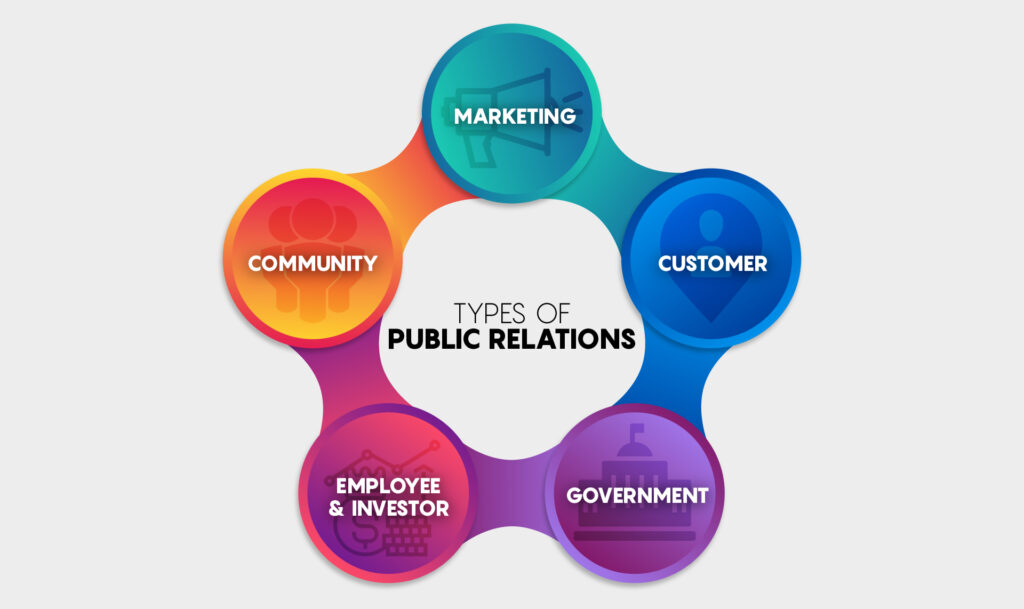Public Relations (PR) often gets confused with the stereotypical image of a person standing behind a podium and giving a rigid press release to the public in times of crisis. Yes, damage control is one of the roles of PR but it is just one part of the process. PR has a far wider scope and plays a very important role in the day-to-day functions of a company.
Defining Public Relation
Public relations are the process of strategically communicating with or disseminating information to individuals, organisations or the general public to build and maintain a good relationship. In simpler language, it is the process of giving out select bits of organisation-related information or communicating in such a way that people see you and your business as a trustworthy source.
Companies usually hire a PR firm or team and outsource it. If it is a smaller company, they would most likely form an internal team to handle matters. The team or individual, depending on the scenario, would draft a specialised plan to communicate messages to the public or other parties through multiple channels. This could include social media, press releases, interviews, articles and so on.

‘‘
The relationship that a company maintains with its shareholders and customers ultimately determines its success.
The Goal And Functions Of Public Relations
The main objective of Public Relations is to maintain a good reputation on behalf of the company in the eyes of the public. People invest in brands that they trust and view as honest and transparent, or at the very least values them as a customer. PR helps communicate this to not only the public but also stakeholders, employees and investors.
Public relations are not, however, advertising for your organisation. The function of it is not to write stories for the papers or push for paid promotions to get in the public’s good graces. It rather uses free or earned media like social media, magazines, news channels and TV programs like those talk shows that you see celebrities promoting their new movies on.
The Founder of Value 360 Communications, Kunal Kishore, says that it is all about staying relevant and integrating all the various multimedia and digital platforms that we have at our disposal. “It becomes about how you stay relevant in a digital economy? The entire consumption of content is happening digitally with consumers relying more and more on the Internet world…so it is about how you devise a strategy for the next 5 to 10 years that takes into account the changing digital ecosystem.”
Taking this into account Public Relation agencies or specialists analyse the public’s perception of the brand and draft up strategies to improve that image using the free media platforms. These strategies could include:
- Writing press releases.
- Preparing speeches for company representatives.
- Planning and executing public outreach events and media interactions.
- Coming up with crisis-scenario strategies for extreme damage control situations.
- Handling the social media presence for the organisation.
- Coordinating PR strategies with the employees of the organisation and making sure everyone is on the same page.
- Dealing with government agencies and policies issues that may arise.
- Handling relationships with investors and stakeholders.
Identifying Which Types Of PR, You Need
Every organisation is unique and has a variety of needs when it comes to image building. The great thing about PR is that it has a large scope to identify which ones are a priority for your organisation.
Marketing
This type of PR generally supports the advertising team and the marketing efforts so that brand awareness and brand image can grow parallelly. This could include special outreach campaigns, public awareness of any guerrilla marketing and so on. Usually takes place when a new product or service is being launched.
Customer/community
When you think of the generic version of PR, this is usually the image that pops into the mind. Handling the social aspects of the brand through community-oriented outreach programs goes a long way in strengthening the trust that people have in the business.
Things like go-green initiatives, educational seminars and blood drives help build that positive image. To successfully execute this, however, there needs to be proper analysis on the needs of a particular community or customer base.
Employee/investors
Contrary to popular belief there is such a thing as PR within an organisation. This process includes caring for the employees and hearing them out in an attempt to create a healthy workflow. On the other end, it also means making the investors happy, producing financial reports, media issues and general complaints. Think of it as greasing the wheels of the organisational beast.
Government
This is not as prevalent as the other types of PR but still an essential part of keeping the company on its feet. It also boosts the brand image if it is endorsed or recognised by the government. On another note, to operate within a country, the business has to show the government that they are fulfilling the lawful policies in place such as:
- Employee protection and fair compensation.
- Fair market competition policies.
- Consumer protection

Where Is It Needed Most?
There are generally three points in a business’s lifespan where PR is crucial. The launch phase, the growth phase and the point of sustainability.
Launch phase
When you are just starting as a business, it is unlikely that you will have the industry clout to go head-to-head with your biggest competitors or have access to the audience that you are aiming for. You will generally have access to a pretty wide and varied demographic and that is okay. Just use PR to reach your intended audience through channels you know they are active on, as well as your social media and website.
This will slowly but surely help bring traction with media outlets as well, thereby boosting your industry clout and getting the brand name out into the public sphere.
Growth phase
The first phase was all about the trial-and-error approach. It was also an opportunity to gather tons of data on the audience you eventually want to target. This stage focuses on using that information to refine the targeting process. Use the information, see which channels and which demographic gave the most positive response and pour your PR efforts into that to help grow it.
Sustainable phase
Once you have achieved the level of brand-recognition you wanted and the reputation you expected, the job now shifts from building to sustaining. Being well-known as a brand is walking a fine line. It can be great for attention but at the same time, you come under tremendous scrutiny. So, at this stage, it is best to use the data that was previously collected, to keep an eye on policy trends, socio-political movements, and the needs of the customers to ensure that your brand is walking the right side of that line.
‘‘
Maintaining healthy public relations is like having a net to catch you and your business if things ever go sour financially or politically. A good reputation will often help the company get out of even the toughest of situations.
Some Things To Be Wary Of
The great thing about PR is that it offers a vast number of options and benefits when used right. For one, it helps build the credibility and reach that an organisation needs to establish with the public. A good strategy has the potential to open a business up to a massive audience base and help it branch out on a large scale. It is also very cost-effective when considering the scope of reach that it provides as opposed to traditional paid media and advertisements.
There are, however, a few bumps to watch out for on this relationship-building journey. Unlike traditional media, it is very hard to measure the level of success a message has when put out. No guarantees exist as such that a given message or strategy will work even if it had worked earlier. Even with a press release, the media outlet will only publish if they feel it is a newsworthy story. It is a leap of faith combined with intensive audience analysis and research.
It is not an easy task by any means but it sure is worth it. PR done right has amazing potential to skyrocket your brand into the big leagues. Check out our article on ‘branding’ to learn more on how to make the best of both worlds!




